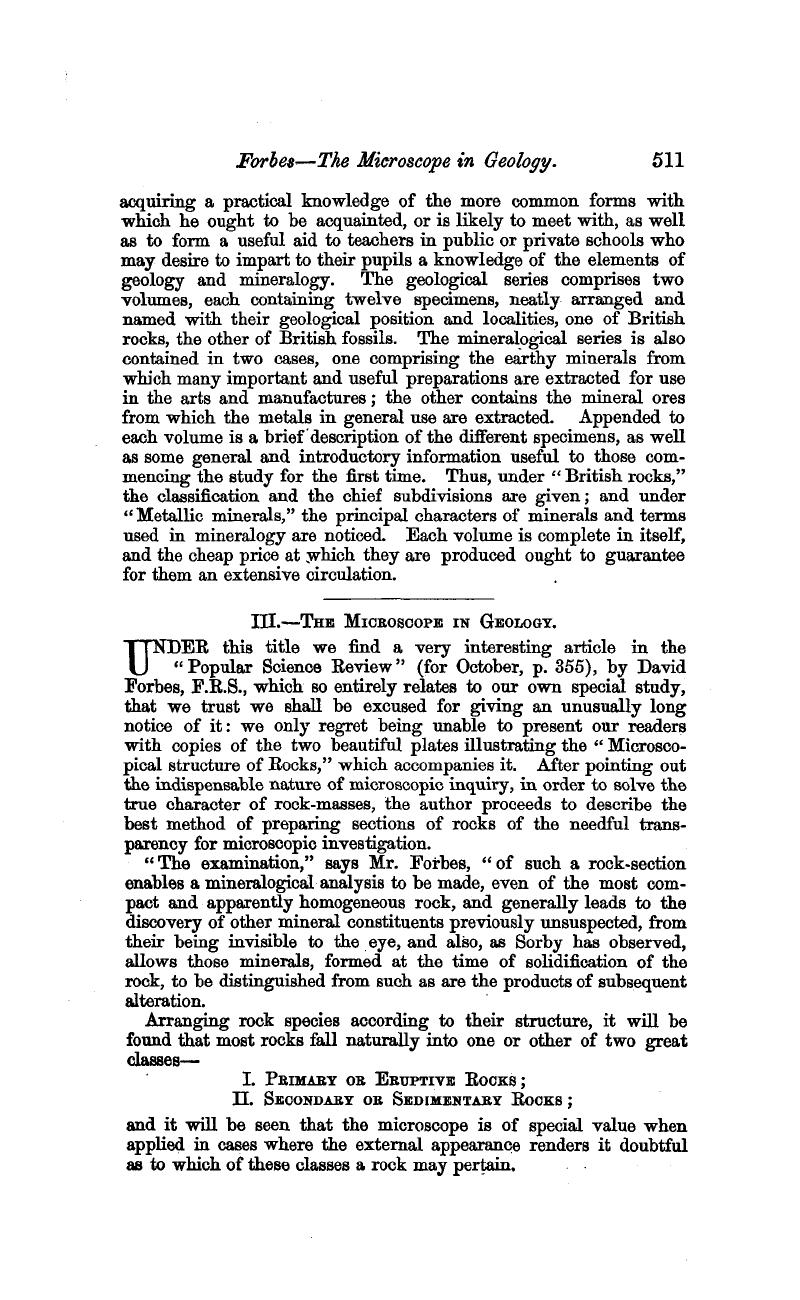No CrossRef data available.
Article contents
III.—The Microscope in Geology.
Published online by Cambridge University Press: 01 May 2009
Abstract

- Type
- Reviews
- Information
- Copyright
- Copyright © Cambridge University Press 1867
References
page 512 note 1 These rocks are indiscriminately called volcanic, igneous, plutonic, crystalline, etc. The term crystalline, although characteristic of these rocks, is not exclusively so, and is consequently less appropriate; many normal sedimentary beds, as rocksalt, gypsum, etc., are perfectly crystalline, and others when altered by metamorphic action, become more or less so.
page 512 note 2 Experiments show that analogous structure can be produced by at least three different methods, all of which, however, agree in the necessity of the mass being in a state of complete liquefaction previous to crystallisation; from—
1. Their solutions in water or other menstrua.
2. Aqueous fusion or melting of hydrated bodies in their water of crystallisation.
3. Igneous or hydro-igneous fusion.
Crystalline structure may nevertheless develop itself by a molecular movement in solid bodies without change of external form or previous liquefaction; as will be hereafter explained, this is frequently the case in nature. The structure so developed is, however, very distinct from the crystallisation after liquefaction, characteristic of the eruptive rocks.
page 514 note 1 Quart. Jour. Geol. Soc., vol. xiv. pp. 453–500.Google Scholar
page 514 note 2 These researches tend to confirm the theory of the igneous origin of granite and eruptive rocks in general. It must not be forgotten that by igneous action, as used by the Plutonist, was always understood the action of heat as developed in volcanoes (the study of which was the basis of the theory itself), in which the agency of water was always recognized. Nearly half a century ago, Scrope not only insisted on the important part played by water in volcanic action, but specially pointed out the difference between such volcanic fusion and ordinary melting. The term hydroigneous action might not be inappropriate for such, but hydro-thermalism does not at all express what is intended. The idea of a true dry fusion in nature exists only in the brains of the ultra-Neptunist or lukewarm hydrothermalist.




